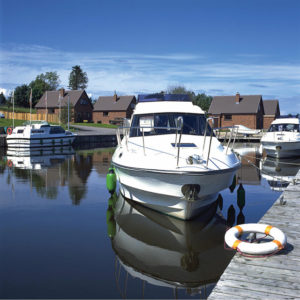Developing a Tourism Strategy 2025

Northern Ireland is aiming to capitalise on a predicted 20 years of sustained growth across global tourism. Recent tourism statistics have proved promising but action is now being taken to develop a tourism strategy to 2025 expanding tourism in Northern Ireland to compete in a highly competitive market, match global trends and adapt to customer attitudes.
A review of Tourism Northern Ireland and the wider tourism structures in 2014 pointed to an absence of an agreed strategic plan for tourism. Despite it exceeding the expectations set out for tourism in the previous Programme for Government, it is widely accepted that in order for Northern Ireland to capitalise on its growth potential a new tourism strategy is required.
In late August 2015 a scoping document released by the Department of Enterprise, Trade and Investment (DETI) and Tourism NI set out the key visions and aspirations for the future of tourism. A consultation and engagement process across the industry will help form an action plan, setting out specific targets and along with the vision element, completing the strategy.
The paper identified four main priorities for tourism in Northern Ireland. The first priority was the need to expand outlook to a more global focus. Expansion of out-of-state markets to drive up the interest and awareness of Northern Ireland as a visitor destination by maximising natural assets, culture and heritage and promoting iconic attractions.
The second priority focuses on developing the ‘experience’ for visitors, ensuring that the experience matches the expectations and standards of international visitors and provides an authentic experience. The basis of this priority lies on a uniform level of customer service across all sectors being represented through consumer technology and modern reviewing techniques. The Belfast Waterfront Conference and Exhibition Centre is expected to be the catalyst for developing the business tourism sector in Northern Ireland. It’s attraction to national and international groupings offers the opportunity to promote a wider package of the tourism sector and encourage repeat visits.
Similarly the importance of events in driving up visitor numbers and generating increased spend has also been identified. On the back of recent successes such as the MTV awards, Irish Open and Giro d’Italia, the aim is that Northern Ireland attracts at least one international event each year and provides a platform to promote itself to potentially new audiences.
In order to achieve the four main tourism priorities the paper sets out and details nine key areas that will enable the vision to be implemented. A new form of leadership from within the tourism sector similar to that which has proved successful in countries such as New Zealand, Canada and the Republic of Ireland must be established. Less of an emphasis is needed on reliance on public sector funding, instead a collaboration between government, tourism agencies, councils and strong private sector industries can promote new support structures and changes to institutional cultures. Continued investment building on the £300 million invested in iconic attractions such as the Giant’s Causeway and Titanic Belfast, is crucial to drive further growth.
 Growth
Growth
The paper has identified a need for improved connectivity and improved access and infrastructure to other markets, while promoting the ease of access through Dublin. While Northern Ireland relies heavily on its ports and airports for access to key markets, it lacks direct services to important inbound tourism markets such as Canada, Germany, Scandinavia and the Middle East. Also up for discussion is an investment in transport infrastructure to upgrade gateways between Northern Ireland and Republic of Ireland and the creation of innovative ways to encourage visitor exploration between both. Accommodation to meet the demands, needs and expectations has also been highlighted. Technology’s influence on tourism has demanded a greater programme of digital innovation to attract an empowered international tourist. The paper identifies Northern Ireland as “an ideal test-bed” for new communications and technology because of its compact size. Home to the youngest and fastest growing population in Europe, a worrying statistic is that fewer micro-tourism businesses in Northern Ireland have websites with real time booking facilities than compared to Great Britain and the Republic of Ireland. The need is for these businesses to adapt, along with tourism as a whole, to changing consumer behaviours and the potential to expand global reach through new digital technology and social communication.
A greater emphasis is needed on analysing performance and utilising market intelligence which expands beyond historical statistical data. Technology has opened up a wide variety of consumer data which has become too big and fast to be interpreted by traditional means. Tourism authorities must utilize instant data to gain market insights, inform large capital investments and make real-time, fact-based marketing decisions. To ensure sustainability in tourism the paper has identified a need for improved skills within the workforce. The paper sets out a desire for tourism to be more appealing as a career of choice to school leavers and graduates, while also offering wide range of skills development opportunities to support progression within the industry.
Recognition among tourism businesses of the power social media and peer reviews offers as a platform to markets and asses their product, has also been identified. It’s part of a wider push towards quality improvement aiming to meet exacting standards of out of state visitors. There is also a role, for government as a whole, to play by creating a policy environment in which tourism can expand. The policies and programmes of all government departments should contribute to the development and growth of the sector and a ‘tourism lens’ should be applied by all departments, agencies and councils to policy and programme development.
Finally, the sustainability of Ireland’s assets in landscape, coast and scenery should be secured through industry demonstrating a responsible approach to ‘green’ schemes. Natural capital, the report states, is growing in credence and should be factored in to potential visitor spend potential and the context of tourism opportunity.
The paper will be assessed through independent research and benchmarking but also through engagement with tourism industry and stakeholders across government. A Tourism Strategy Development Group has been established to consider the findings, finalise the tourism vision and scope out an action plan for delivery. The draft tourism strategy will now be presented to the new Minister for the Economy, Simon Hamilton, before formal public consultation and Executive approval.





